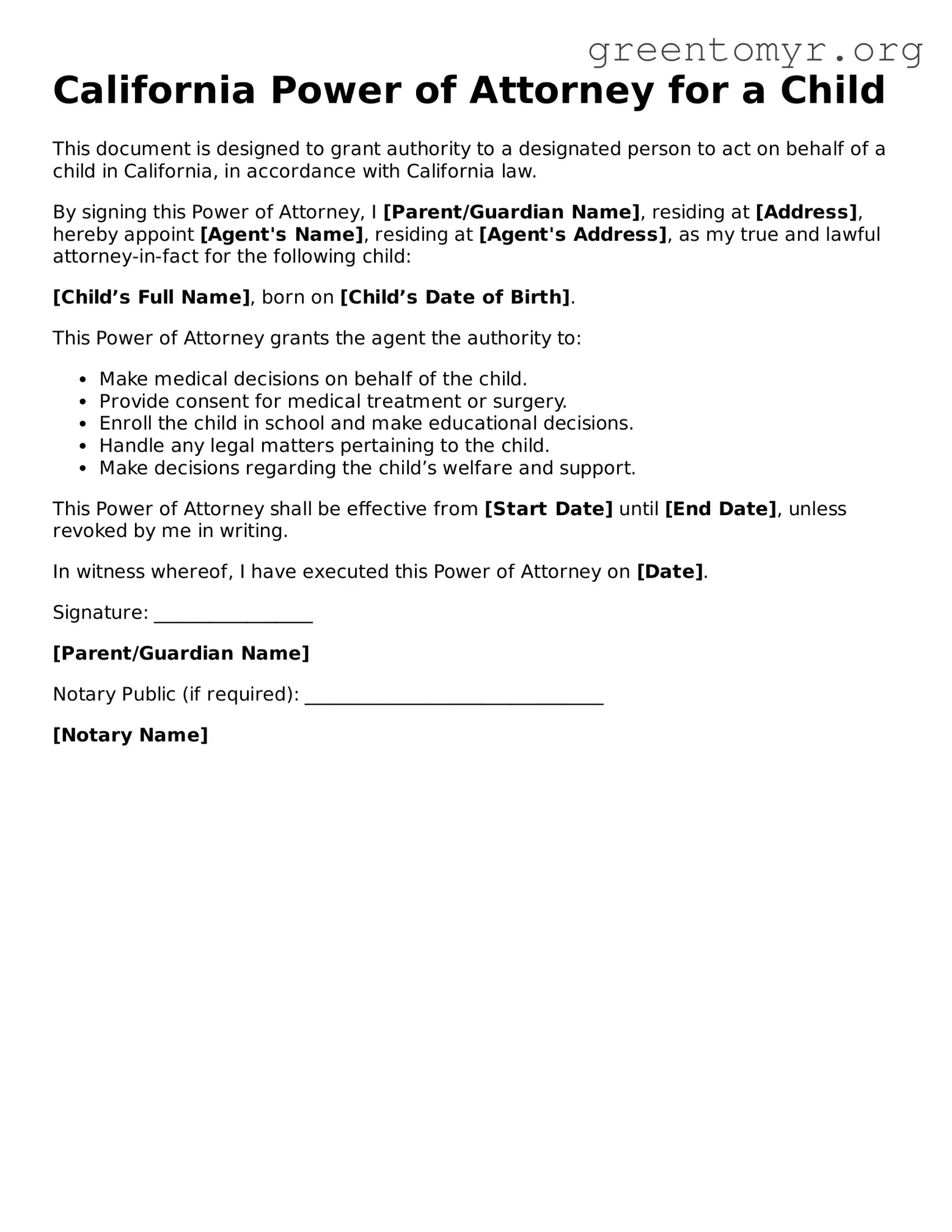What is a Power of Attorney for a Child in California?
A Power of Attorney for a Child is a legal document that allows a parent or guardian to give another adult the authority to make decisions and take action on behalf of their child. This can be useful for situations like traveling, temporary guardianship, or if a parent needs to be away for an extended period.
Who can authorize a Power of Attorney for a Child?
Typically, a parent or legal guardian of the child can create and sign the Power of Attorney. Both parents should sign the document if they share custody. If one parent is absent or unavailable, the other can usually proceed on their own.
The form can grant various powers, including the ability to:
-
Make medical decisions for the child
-
Enroll the child in school
-
Authorize travel and authorize other activities
-
Access important records
It's essential to specify any limitations or specific powers within the document to provide clarity.
Is the Power of Attorney for a Child temporary or permanent?
This form is generally intended for temporary arrangements. It can be used for specific time frames, such as a vacation or when a parent is away. However, it should be clearly stated in the document how long the authority lasts.
Do I need a witness or notarization for this document?
In California, it is advisable but not always mandatory to have a notary public witness the signing of the document. Having a notary adds an extra layer of authenticity and can prevent disputes later. Always check local requirements, as they can vary.
Can the Power of Attorney for a Child be revoked?
Yes, the Power of Attorney can be revoked at any time by the parent or guardian who created it. It’s best to do this in writing. If you revoke the authority, notify the person who was given the Power of Attorney and any relevant third parties, like schools or medical facilities.
What happens if the child needs medical attention while under someone else's care?
If the Power of Attorney includes medical decision-making authority, the designated person can make necessary healthcare decisions for the child. It’s crucial that the form clearly spells out any medical powers granted to avoid complications in emergencies.
How do I create a Power of Attorney for a Child in California?
To create this document, you can find templates online or consult an attorney for help. Fill out the form with all necessary information, including your child's details, the chosen representative's information, and any specific powers granted. Both parties should then sign the document, preferably in front of a notary.
The document should identify the child and the person being granted authority. It needs the signatures of the parent(s) and, ideally, a notary's signature. Make sure to specify the duration and limitations of the authority granted to avoid misunderstandings.
Can this Power of Attorney be used across state lines?
Yes, a Power of Attorney for a Child can often be recognized across state lines. However, it’s wise to check the specific laws in the state you are entering. Some states may have their requirements or forms, so ensure you comply with local regulations to avoid complications.
